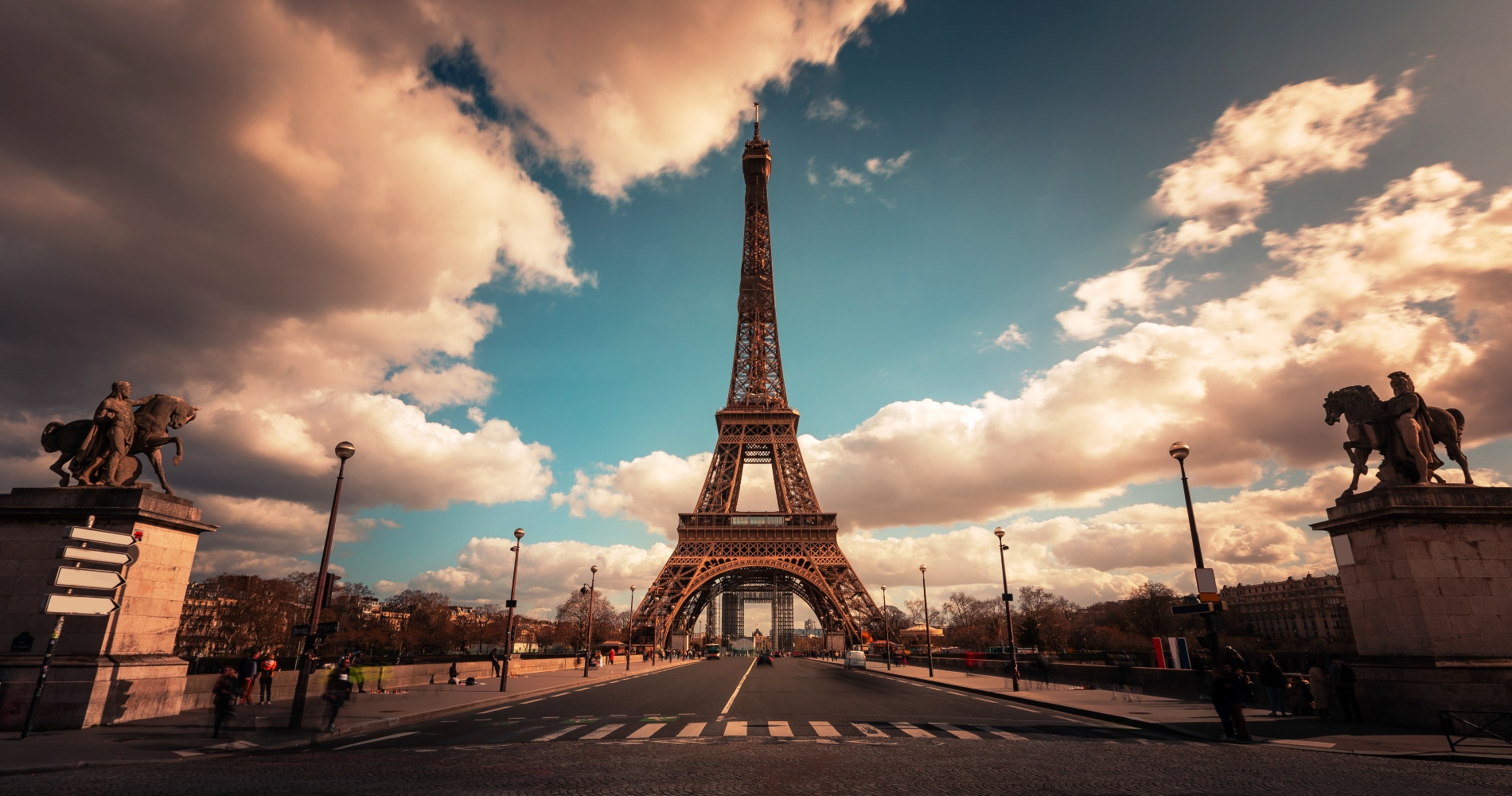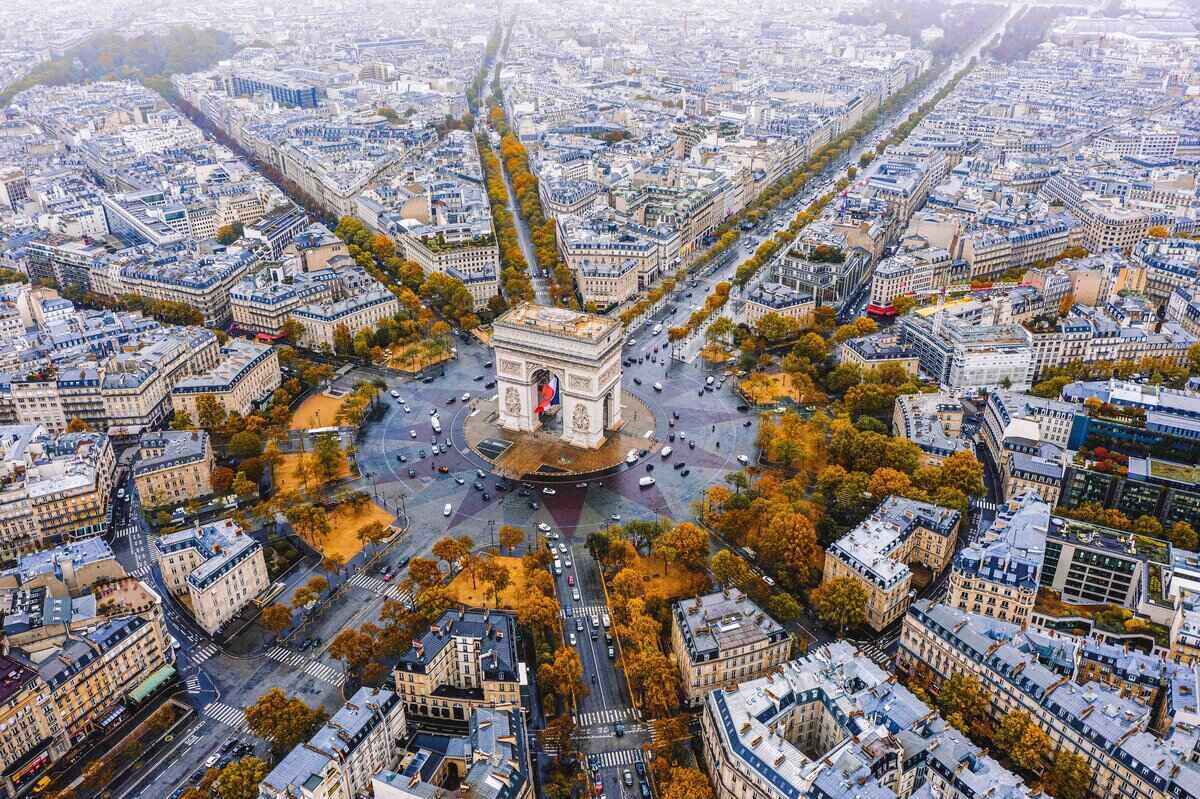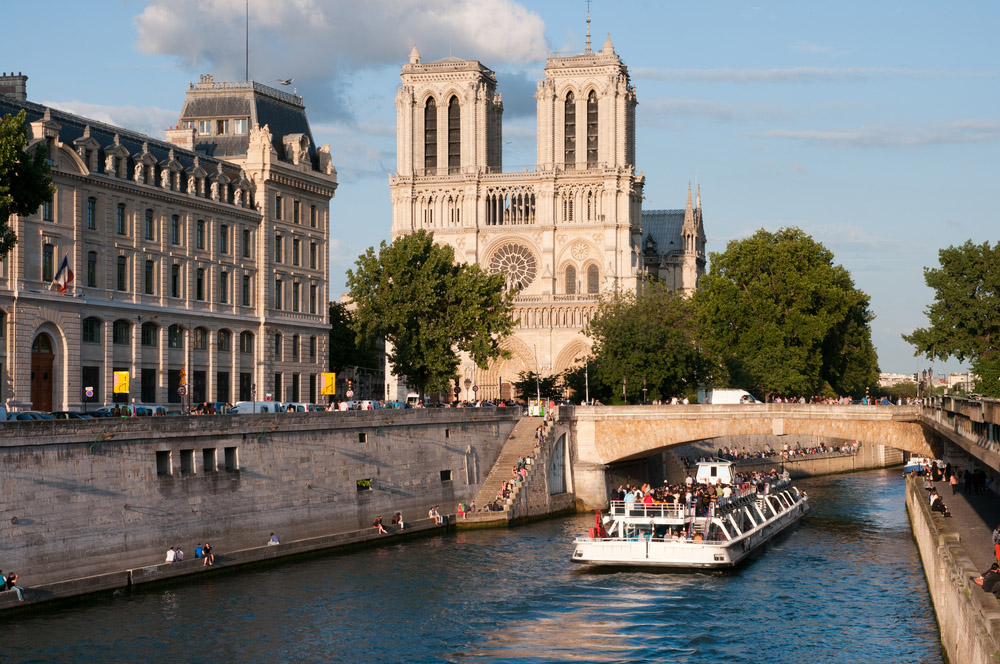
Paris
In the 21st century, Paris added new museums and a new concert hall, but in 2005 it also experienced violent unrest in the housing projects in the surrounding banlieues (suburbs), inhabited largely by first and second generation immigrants from France's former colonies in the Maghreb and Sub-Saharan Africa.
In 2015, the city and the nation were shocked by two deadly terrorist attacks carried out by Islamic extremists. The population of the city declined steadily from 1921 until 2004, due to a decrease in family size and an exodus of the middle class to the suburbs; but it is increasing slowly once again, as young people and immigrants move into the city.Tourists flock to this city on the Seine in their droves seeking an elusive imagined Paris that lives in a set of images: carelessly flicked cigarettes; rock star philosophers debating; the smell of freshly baked baguettes wafting from the baskets of passing bicycles; beauty in all things, buildings, art, food, clothing, people and ideas.
Visitors come to revel in the elegance of the urban, where artistry can be found around every corner; they hope to sample just a hint of the irresistible city that provided the sustenance and setting for works such as Alexandre Dumas' The Three Musketeers and Victor Hugo's Les Miserables.
Paris borrows its name from the Parisii, a Celtic tribe that established a settlement here in the 3rd century BC on what is now the Île de la Cité. In time the Romans built a town here and called it Lutetia, Latin for 'midwater dwelling'. Since Clovis I, King of the Franks, made the city his capital in AD 508, Paris has been a centre of power. Clovis's Carolingian dynasty ruled until 987 when Hugh Capet was elected 'King of France'; Capet's male descendants formed the Capetian line of kings who reigned until Louis XVI was deposed in the famous French Revolution of 1789. After over 800 years of monarchy, Paris lurched between republics, emperors (the three Napoleons), and kings in the 19th century before the Belle Époque (or the 'Beautiful Epoch', the era in which Paris flourished as the world's centre for established and avant-garde culture) had its day. Paris, really, is a city of revolutions. It has never been stationary, and its present remains vibrant.
In many ways, we are attracted to an idea of Paris, the city of that storied Belle Époque, the ville lumièré (or the 'City of Light'), originally derived for its celebrated luminaries. We imagine a city, home to one of the oldest universities in the world (the Sorbonne), whose sophistication, beauty and dizzying splendour, from the gasping gothic and opulent baroque to the soaring modern and mind-bending post-modern, has attracted artists and intellectuals for centuries.

As we gaze up at the Eiffel Tower, at the red windmill of the Moulin Rouge or at the paintings that adorn the walls of the Musée d'Orsay, we are grasping for those seductive years of the Belle Époque. Between 1880 and the outbreak of the First World War, the tumult of French politics seemed to abate, and Paris became the world's cultural North Star; the place of possibilities. Automobiles were appearing on the streets, the city was lit by tens of thousands of gas lamps, and Auguste and Louis Lumière were showing the first films in history. In the whirlwind freethinking fervour Paris drove art's evolution: from Impressionism and Modernism to Art Nouveau and Art Deco; from Vincent Van Gogh and Paul Cézanne to Henry Matisse and Pablo Picasso. Eric Satie played his minimalist melodies on a piano in Montmartre as the cancan, set to Offenbach's music, was danced at cabarets and music halls around Paris' distinctive boulevards, squares and parks recently designed by Georges-Eugène Haussmann. To open the 1889 World's Fair, Gustave Eiffel built the world's tallest structure, a wrought-iron lattice tower topped with hundreds of gas lights beaming out The Tricolore (the flag of France). Quite literally, this was The City (and The Nation) of Light.Clovis I (c. AD 466-511) was the first king of France. He united several of the Frankish tribes living in territories that now form part of modern-day France, doing away with the system of local chieftains and bringing them together under a single ruler. He established a dynasty that became known as the Merovingians, with the kingship passed down his line of succession for over 200 years. Widely recognised as a clever military tactician, he took control of a small rump state in what had been the Western Roman province of Gaul, in northern France, in 486. From there, his territories quickly expanded, and he made Paris his capital city in 508.
The Paris of which we fantasise, its bohemians milling outside late-night cafés in the shadow of palaces and luxurious galleries, can still be found; but the real Paris is more than this projection. Beyond the limelight is a sprawling metropolis that extends well beyond the elegant boulevards of the city centre. It's first and foremost the nation's capital, where most of its financial activity has taken place, and where its politics has been shaped over the centuries.The magnificent Our Lady of Paris, better known by its French name, Notre-Dame, is one of the most famous cathedrals in the world and one of the finest examples of French Medieval Gothic architecture. Construction began in 1163 during the reign of Louis VII and was completed around 1260.
The cathedral perfectly exemplifies this periods style, which broke with Romanesque convention to introduce Gothic elements, including pointed arches, ribbed vaults and flying buttresses. Originating in France, the style spread across the continent in the 12th and 13th centuries and dominated European architectural tastes for 400 years.

On 15 April 2019, while undergoing restoration work, Notre-Dame caught fire. Much of the cathedral's roof was destroyed, and the spire, or flèche, collapsed completely in dramatic images beamed around the world. In the immediate aftermath, French President Emmanuel Macron pledged to restore the cathedral to its former glory. Donations flooded in from both France and around the world to help with the reconstruction work.In the late 18th century, a number of factors contributed to growing discontent among France's lower classes. Resentment stemmed in part from the privileges enjoyed by the aristocracy and the Catholic clergy, the government's debt, unpopular tax schemes and a series of bad harvests. Influenced by Enlightenment ideals, demands for change grew, and the Third Estate, or commoners, soon rose against the monarchy in an attempt to achieve political and social rights.
On 14 July 1789, French civilians stormed the Bastille prison in Paris, marking the start of the Revolution. Following this event, violent outbreaks spread from the capital across the country, as people went out into the streets to protest against the system. Ten years of bloodshed and instability followed, costing thousands of lives and ultimately ending the absolute monarchy of King Louis XVI.Characterised by a sense of optimism, peace, prosperity and technological and scientific innovation, La Belle Époque refers to the pre-war era in France, which started in 1870 and continued until 1914. These positive factors led to a thriving artistic wave through the country, with Paris as the main hub. Some of the major contributions of this period include the construction of the Eiffel Tower, the inauguration of the Paris Métro, the opening of the Moulin Rouge and the post-Impressionist movements of the visual arts. Named retroactively, the era's optimism contrasted significantly with the horrors of the world war that followed.At the beginning of the twelfth century, the first university in France was founded thanks to the uprisings of students and professors. Louis IX appointed the chaplain, Robert de Sorbon, to establish the College, which was later named after him, the Sorbonne.
Three insurrections took place during the fourteenth century in Paris: the first, in 1358, when Étienne Marcel led a merchant revolt. The second was a tax riot known as the Maillot uprising in 1382, and the third was the Cabochien revolt in 1413. These riots were part of the Hundred Years' War.
Additionally, the capital of France, which was the most populated city in Europe in 1328, was struck by the Bubonic plague, killing thousands of Parisians. Following the Hundred Years' War, Paris was devastated and Joan of Arc was unable to keep the British from taking Paris. In 1431, Henry VI of England was crowned King of France and the English did not leave until 1436.
The city kept on growing during the following centuries, although monarchs preferred to live in the Loire Valley. In 1528, King Francis I returned the royal residence to Paris and the city became the largest in Western Europe.
As a consequence of the Fronde, poverty spread throughout Paris. During this period, there was an explosion of the Enlightenment philosophical movement, whose principles are based on reason, equality and freedom.
Philosophers and authors such as Voltaire, Rousseau, Diderot and Montesquieu fostered the Enlightenment, creating a need for a socio-economic equality that led to the revolution and the decline of the divine right monarchy.
On the 14 July 1789, the Parisians stormed the Bastille, symbol of the royal authority and on the 3 September 1791, the first written Constitution was created and approved by King Louis XVI. The King and ministers made up the executive branch and the Monarch was allowed a suspensive veto of the laws approved by the National Assembly.
On 10 August, 1792, the Parisians attacked the Tuileries Palace and the National Assembly suspended the King's constitutional rights. The new parliament abolished the monarchy and proclaimed the Republic. As a consequence, on 17 August 1795, a new constitution was approved giving the executive power to a Directory.Once Napoleon had been defeated, France experienced great political uncertainty until Napoleon's nephew organized a coup d'état in 1851 and became Emperor Napoleon III. During the following seventeen years, Napoleon III promoted the city's urban development.
During this period and with Baron Haussmann as the prefect of Paris, the city changed its urban structure, rebuilding the center, knocking down its fortification and expanding the metropolitan territory.
On the 28 January 1871, Paris was conquered by the Prussian troops and a few years later (at the end of 1800), the Third Republic was proclaimed. With the new government, an era of economic growth began for the city, promoting in 1889 the construction of the Eiffel Tower, worldwide symbol of Paris.From the twentieth century on, Paris suffered important changes with the reconstruction of different neighborhoods, many damaged during World War I and World War II.
During World War I, the city resisted the German offensives. However, in 1940, Paris was occupied by the Nazis, although the Parisians resisted and freed the capital on 25 August 1944.
During the war against Algeria, several violent manifestations took place in Paris against the war, with numerous attacks by the OAS (Organisation of the Secret Army).
During the months of May and June 1968, a series of protests took place in the capital of France, known as “May 68”. This was the largest student protest in the history of France and, possibly, the rest of Western Europe.
One of the last riots to take place in Paris was in March 2006, when students poured out onto the streets and protested against the labour market reform.
In November 2015, Paris witnessed a tragic event, several terrorist attacks hit the city and the suburbs of Saint-Denis, killing 137 people and injuring 415.